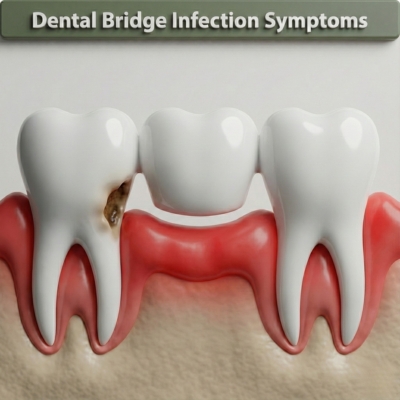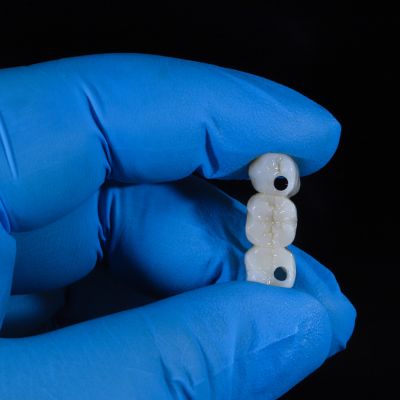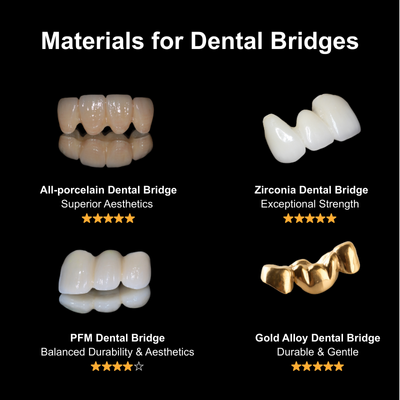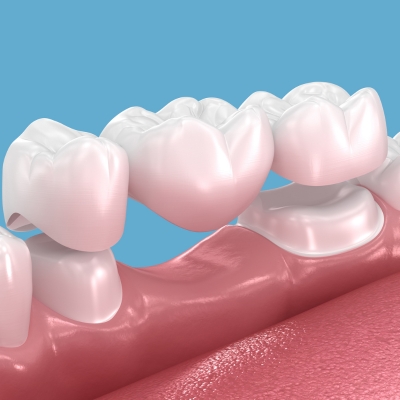News + Articles
Pros and Cons of Dental Bridges: A Complete 2025 Guide
A dental bridge is a proven solution for replacing missing teeth, offering a faster treatment timeline and a more affordable initial option than a dental implant.
However, it’s essential to understand the primary trade-off: this solution requires permanently altering the healthy teeth adjacent to the gap.
In this guide, you will find a clear breakdown of the six key benefits and four main drawbacks of dental bridges.
You’ll also see how they compare to alternatives like dental implants and partial dentures.
Finally, we walk you through our gentle, step-by-step procedure to help you make a confident and comfortable decision.

6 Key Pros of Dental Bridges
1. Restores Your Ability to Chew and Speak Properly
a) Improves of Your Chew
A dental bridge replaces missing teeth with durable, artificial restorations. This structure functions like your natural teeth by distributing bite forces evenly, which allows you to chew tougher foods with comfort and confidence.
b) Improves of Your Speech
A gap from a missing tooth often disrupts airflow, which creates speech impediments. A dental bridge closes this gap to prevent common issues, such as whistling or slurring, and restores your ability to speak clearly.
2. Prevents Surrounding Teeth from Shifting
When a tooth is missing, the surrounding teeth begin to drift into the empty space. A dental bridge fills this gap, acting as a placeholder to keep your healthy, natural teeth in their proper alignment and maintain a correct bite.
3. A Cost-Effective and Widely Covered Solution
Compared to other tooth replacement options, dental bridges often have a lower upfront cost.
They are a standard dental procedure frequently covered by insurance plans, making them a financially accessible choice for many patients.
4. Achieves a Restored Smile in Just 2-3 Visits
The process for designing and placing a dental bridge is efficient. From your initial consultation to the final fitting, the entire procedure is typically completed in just two to three dental visits, offering a rapid path to a complete smile.
5. Improves Overall Bite Alignment
A bridge doesn’t just fill a gap, it restores the structural integrity of the bite. This prevents over-eruption of the opposing tooth and ensures that bite forces are distributed correctly across the entire arch, reducing strain on other teeth.
6. A Proven and Predictable Procedure
As a time-tested and well-established procedure in restorative dentistry, dental bridges offer highly predictable outcomes. This long-standing reliability means you can have confidence in the solution.
When performed by an experienced dentist using refined techniques, the result is a trustworthy and lasting restoration for your smile.
4 Key Cons of Dental Bridges
1. Requires Permanent Alteration of Healthy Teeth
To support a traditional bridge, the dentist must reshape the adjacent healthy teeth (abutment teeth) by removing enamel. These are then fitted with dental crowns to anchor the bridge.
This removal of healthy tooth structure is an irreversible procedure that makes the abutment teeth more reliant on the protection of a crown for their lifetime.
Once this structure is removed, the abutment teeth will always require a crown or similar covering for protection, making it a lifelong commitment.
2. Does Not Stimulate the Jawbone, Leading to Bone Loss
Your jawbone maintains its density and form because it is constantly stimulated by the roots of your natural teeth during chewing. When a tooth is lost, that stimulation disappears.
This triggers a biological process called bone resorption, where the body naturally begins to break down the unused jawbone.
A dental bridge rests on top of the gums and does not replace the tooth root, so it cannot stop this process.
Over time, this bone loss can create a visible indentation under the bridge and alter your facial structure, leading to a sunken appearance.
This change in bone structure is what can lead to a sunken or prematurely aged appearance in the lower face over the years.
3. Places Concentrated Stress on Supporting Teeth
A dental bridge relies entirely on the two crowned natural teeth for support. These abutment teeth must absorb all the chewing forces for both themselves and the missing tooth.
This concentrated, long-term stress can exceed what they are designed to handle, which increases the risk of fractures or nerve damage over time.
4. Higher Risk of Decay if Not Maintained Properly
The margins where the dental crowns meet your natural teeth can create a challenging area to clean.
If oral hygiene is not meticulous, plaque and bacteria can accumulate at these edges, leading to decay that attacks the supporting abutment teeth.
This type of decay is particularly concerning because it occurs under the crown, making it invisible to the naked eye until it becomes severe.
At Restoration Dental OC, we gentle approach includes providing you with specialized tools, such as floss threaders and water flossers, and detailed instructions to effectively clean these hard-to-reach areas.
Comparing the Types of Dental Bridges
Before exploring the different types of dental bridges, it’s essential to understand their core components.
Our detailed guide on what a dental bridge is explains how the structure functions and lays the foundation for the comparisons below.
With this understanding, you’ll see that each bridge type is designed for specific clinical situations, offering distinct advantages and limitations.
The table below provides a clear side-by-side comparison to help you determine which option best suits your dental needs.
Bridge Type | Best For | Key Pro | Key Con |
Traditional | Replacing molars; areas with high chewing force. | Extremely strong and durable. | Requires significant alteration of two healthy teeth. |
Cantilever | Low-stress areas (front teeth) when only one adjacent tooth is available. | Only requires altering one adjacent tooth. | High stress on the single supporting tooth, increasing fracture risk. |
Maryland | Replacing front teeth, especially for younger patients. | Preserves healthy tooth structure with minimal alteration. | Weaker bond than traditional bridges; not for heavy biting forces. |
Implant-Supported | Replacing multiple missing teeth in a row; long-term solutions. | Prevents bone loss and doesn't alter healthy teeth. | Higher cost, longer treatment time, requires surgery. |
A Quick Comparison of Dental Bridge Materials
Choosing the right material for your dental bridge involves balancing aesthetic goals with functional demands.
This table provides a clear overview to help you understand the best options for your smile.
Material | Best For | Aesthetics | Durability |
All-Porcelain / Ceramic | Replacing front teeth | Excellent (Most natural appearance) | Good |
Porcelain-Fused-to-Metal | Balancing appearance and strength | Very Good (Can show a metal line at the gum) | Excellent |
Zirconia | Replacing molars; high-stress areas | Good (Can be slightly more opaque) | Exceptional (Highest strength) |
Dental Bridge vs. Implant and Partial Dentures
The best tooth replacement option depends on your specific oral health, budget, and long-term goals.
The most common alternative to a dental bridge is a dental implant, and a direct comparison can clarify the decision.
Feature | Dental Bridge | Dental Implant | Partial Denture |
Procedure Time | 2–3 weeks | 3–6 months | 2–4 weeks |
Longevity | 5–15 years | 25+ years (lifelong) | 5–8 years |
Upfront Cost | Lower | Higher | Lowest |
Impact on Adjacent Teeth | Requires permanent alteration | None (preserves teeth) | Clasps may stress teeth |
Jawbone Health | Does not prevent bone loss | Preserves jawbone | Does not prevent bone loss |
Stability & Comfort | High (fixed in place) | Highest (fused with bone) | Lower (removable) |
Who is a Good Candidate for a Dental Bridge?
A dental bridge is an effective solution, but it is best suited for patients who meet certain criteria.
You are an ideal candidate if you:
- Have one or more missing teeth in the same area.
- Possess strong, healthy teeth and gums surrounding the gap to support the bridge.
- Are a non-smoker, as smoking can increase the risk of complications.
- Want a relatively quick tooth replacement solution.
The Dental Bridge Procedure: A Gentle, Step-by-Step Guide
At Restoration Dental OC, we ensure your experience is comfortable and predictable. The procedure follows a gentle, precise process.
1. Your Gentle Consultation: We begin by discussing your needs and evaluating your oral health to confirm a bridge is the ideal solution for you.
2. Preparing the Abutment Teeth: We gently reshape the adjacent teeth under local anesthesia to ensure your complete comfort.
3. Taking a Precision Impression: An exact mold of your teeth is made to create a bridge that fits perfectly and looks natural.
4. Placing a Temporary Bridge: A temporary restoration is placed to protect your teeth while your custom, permanent bridge is crafted from high-quality materials like zirconia or porcelain.
5. Bonding Your Permanent Bridge: During your final visit, we check the fit and bite before permanently bonding your new bridge, completing your smile.
Frequently Asked Questions
How strong are dental bridges?
Dental bridges are very strong, typically lasting between 5 to 15 years depending on the material and patient’s oral hygiene. Their durability comes from robust materials like solid zirconia or porcelain-fused-to-metal, which are designed to withstand normal chewing forces.
Are bridges bad for your teeth?
A well-designed and properly maintained dental bridge is not bad for your teeth. The main consideration is that healthy teeth must be altered to support the bridge. With proper oral hygiene, the bridge and the supporting teeth can remain healthy for many years.
What happens if a dental bridge fails?
If a bridge fails due to damage or decay, the first step is a gentle examination to determine the cause. Depending on the issue, treatment may involve repairing the bridge, creating a new one, or discussing alternative tooth replacement solutions like a dental implant or partial denture.
Is a dental bridge worth it?
A dental bridge is worth it if your priorities are speed and lower upfront cost. However, if your main goals are to preserve healthy teeth and prevent long-term jawbone loss, a dental implant is often the superior long-term investment.
Schedule Your Gentle Bridge Assessment Today
Making a decision about tooth replacement is significant. Schedule your gentle, no-pressure consultation today. Our team will be happy to answer all your questions and help you find the perfect solution for your smile.

Dr. Ronald Pham, DDS, is a Doctor of Dental Surgery who graduated from the USC Ostrow School of Dentistry in 2015. With over 8 years of experience in restorative dentistry, including dental implants, crowns, bridges, fillings, root canals…
Dr. Pham has restored the smiles of +2,000 patients and is committed to providing professional dental care focused on patient comfort. He achieves this by combining a welcoming space and state-of-the-art dental technology.
Book Your Appointment Now
Related Articles

Guaranteed Smiles!
As a premiere dentist office in Orange CA, we will always make sure that your experience is memorable, friendly, and professional. We strive to meet your highest expectations in every way imaginable, from your very first interaction with our office staff, to the quality of treatment you receive. We don’t take our patients’ trust for granted, and will promise to over-deliver with your best interest in mind. So give us a call today, and experience our first-class service!
Insurance
Accepted
We proudly accept most dental insurance plans, and welcome cash patients as well. Call us today for more information.
$199
Special
New to our dental office? Take advantage of our New Patient special offer with x-rays, exam, and full report of findings.
Extended
Hours
Do you have an emergency? Need to see us a little later or earlier? Let us know. We can be flexible to meet your busy schedule!










